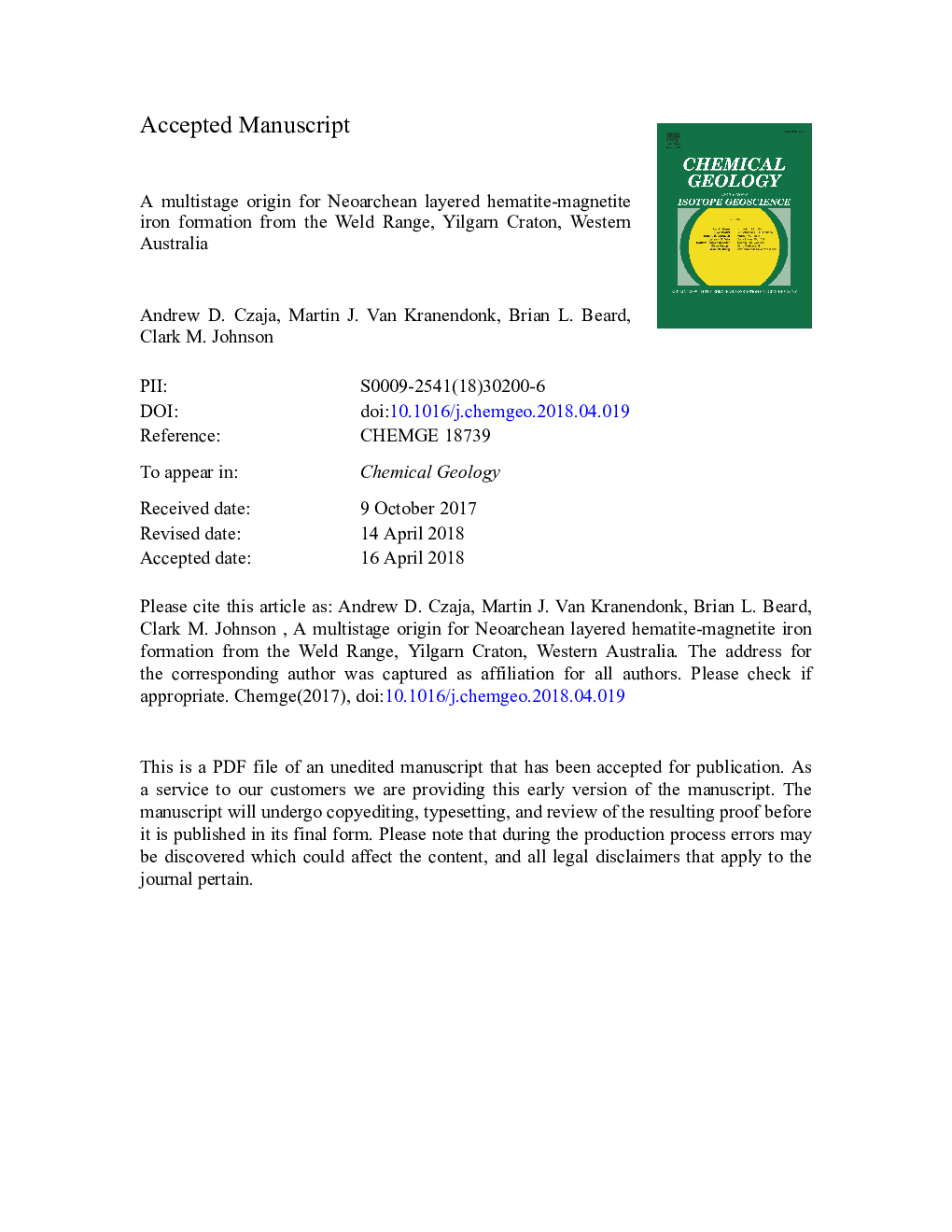| Article ID | Journal | Published Year | Pages | File Type |
|---|---|---|---|---|
| 8910211 | Chemical Geology | 2018 | 55 Pages |
Abstract
The entirely positive δ56Fe values for all Fe phases in the Weld Range BIF stands in stark contrast to the more massive Superior-type BIFs of the Paleoproterozoic Hamersley and Transvaal basins of Western Australia and South Africa, respectively, which have δ56Fe values that average close to 0â° but vary over nearly the entire range of δ56Fe values measured in nature (δ56Feâ¯=â¯â2.5 to +2.6â°). The Weld Range BIF δ56Fe values are similar to those of older Algoma-type BIFs such as the Paleoarchean Isua BIF of Greenland but are less positive on average. This overall trend of decreasing average δ56Fe values through time likely records an overall increasing trend of oxygenation of the Archean surface ocean from 3.8 to 2.45â¯billionâ¯years ago.
Related Topics
Physical Sciences and Engineering
Earth and Planetary Sciences
Geochemistry and Petrology
Authors
Andrew D. Czaja, Martin J. Van Kranendonk, Brian L. Beard, Clark M. Johnson,
